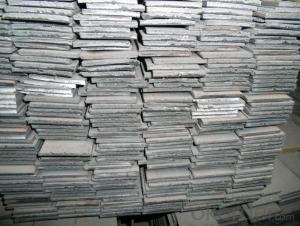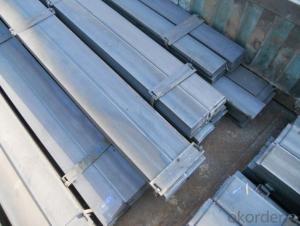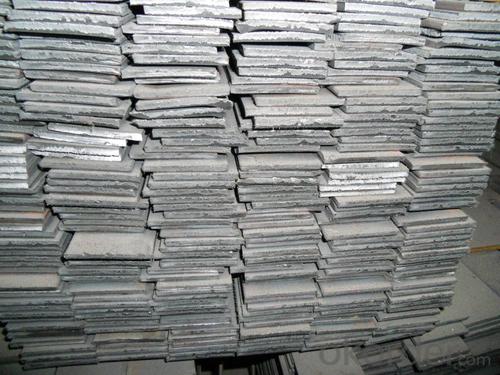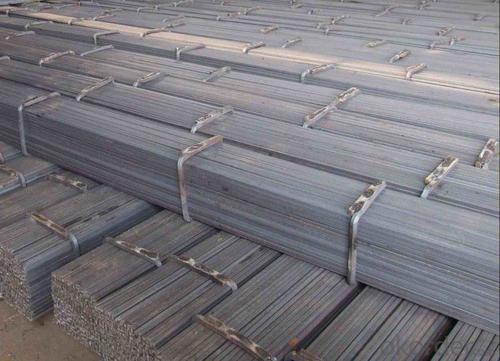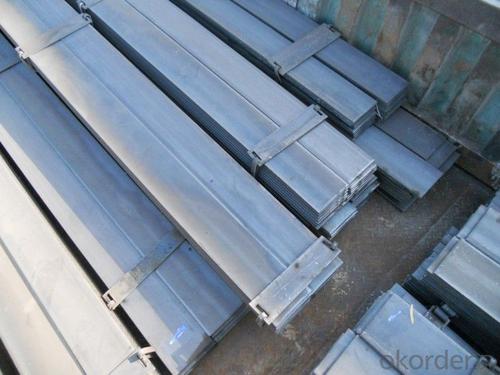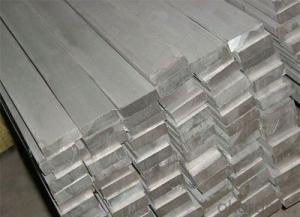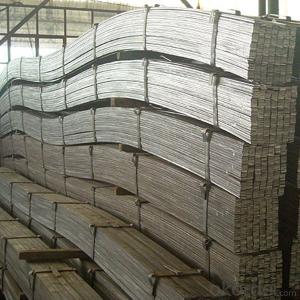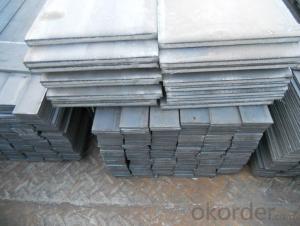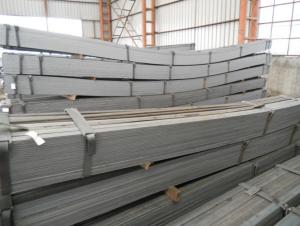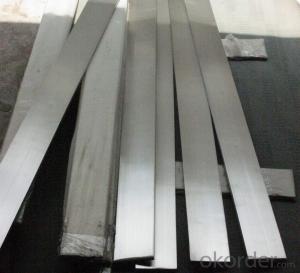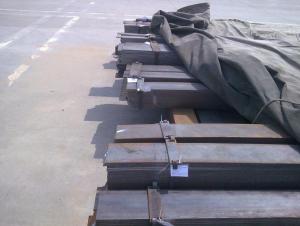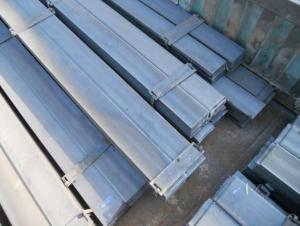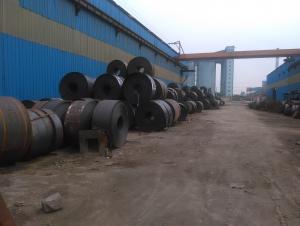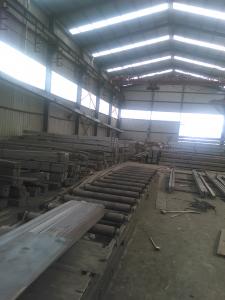Mild steel flat bars with high quality and low price
- Loading Port:
- Tianjin
- Payment Terms:
- TT OR LC
- Min Order Qty:
- 25 m.t.
- Supply Capability:
- 100000 m.t./month
OKorder Service Pledge
OKorder Financial Service
You Might Also Like
Mild Steel Flat Bar Details:
| Minimum Order Quantity: | 25 m.t. | Unit: | m.t. | Loading Port: | China Main Port |
| Supply Ability: | 80000-100000MTS/YEAR m.t./month | Payment Terms: | TT or LC |
Product Description:
Specification of Mild Steel Flat Bar
Commodity: Mild Steel Flat Bar
Standard: GB;JIS
Material: Q195-235;SS400
Brand name: FLATSPACE
Origin place: China
Thickness: 3mm-30mm
Width:20mm-200mm
Length: Max 12m
Certification: SGS/BV
Chemical composition of Q235
Alloy No | Grade | Element(%) | ||||
C
| Mn
| S
| P
| Si
| ||
Q235
|
B
|
0.12—0.20 |
0.3—0.7 |
≤0.045 |
≤0.045
|
≤0.3
|
Physical properties of Q235
Alloy No | Grade | Yielding strength point(Mpa) | Tensile strength (Mpa) | Elongation after fracture(%) | ||||||
Thickness (mm) | Thickness (mm) | |||||||||
≤16 | >16--40 | >40--60 | >60--100 | ≤16 | >16--40 | >40--60 | >60--100 | |||
≥ | ≥ | |||||||||
Q235 |
B |
235 |
225 |
215 |
205 |
375--500 |
26 |
25 |
24 |
23 |
Usage/Applications of Mild Steel Flat Bar
Widely used for construction, Machinery manufacturing, Iron tower steel structure, Shipbuilding; Steel grating, Staircase, Bridge, Viaduct, Railway spare parts, Boilers making etc.
Packaging & Delivery of Mild Steel Flat Bar
Packaging Details: The Mild Steel Flat Bars are packed in bundles and loaded in 20 feet/40 feet container, or shipped by bulk cargo ,also we can do as customer's requirements.
Delivery Details:30~45 days upon the receipt of buyer payment by T.T. or L/C.
Production Flow of Mild Steel Flat Bar
The Mild steel flat bar is made through three processes:
1.Feeding the material: Feeding the row material (the steel plate) to Slitting Line.
2.Slitting:The steel plate would be slitted into expected width by lengthways cutter.
3. Leveled and cutting: The plat bar would be ground into level by the grinder and then cut into required length.
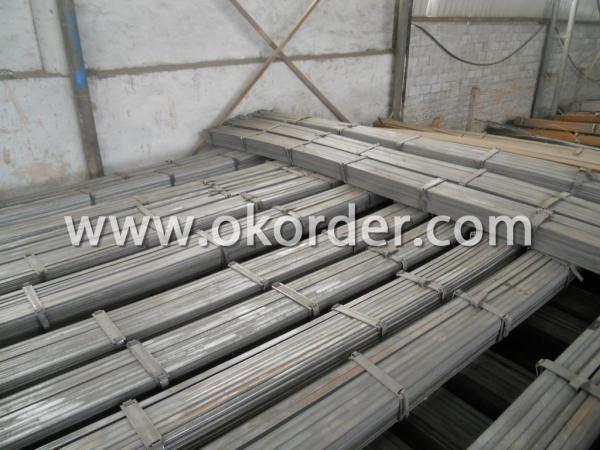
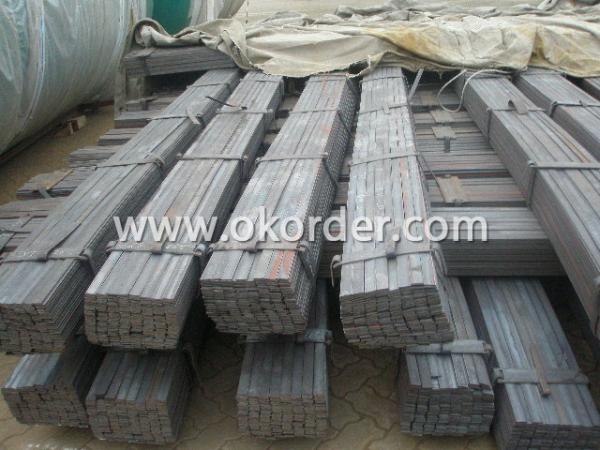
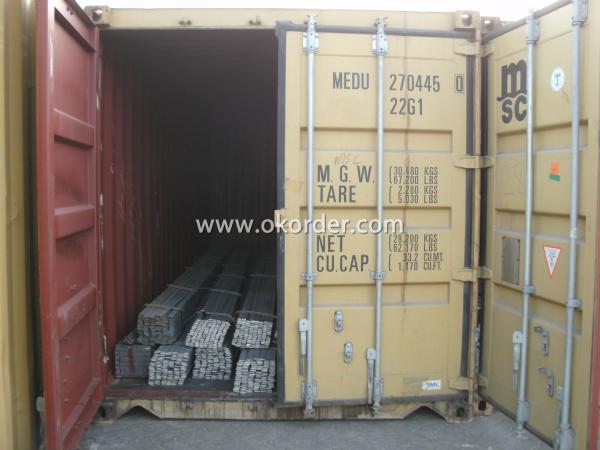
FLATSPACE is specialized in production and sales of slit flat bars. We offered the individuation processing service of slitting and crosscut. Our flat bar the width form 10mm to 1800mm, and thichness from 2.5mm to 25mm.
View Manufacturer's Shop
1. Manufacturer Overview | |
|---|---|
| Location | Hebei, China |
| Year Established | 2009 |
| Annual Output Value | Above US$ 150 Million |
| Main Markets | Southeast Aisa, Middle east, Africa |
| Company Certifications | |
2. Manufacturer Certificates | |
|---|---|
| a) Certification Name | |
| Range | |
| Reference | |
| Validity Period | |
3. Manufacturer Capability | |
|---|---|
| a)Trade Capacity | |
| Nearest Port | Tianjin |
| Export Percentage | 70%-80% |
| No.of Employees in Trade Department | 10-15 people |
| Language Spoken: | English; Chinese |
| b)Factory Information | |
| Factory Size: | Above 20,000 square meters |
| No. of Production Lines | 7 |
| Contract Manufacturing | OEM Service Offered; |
| Product Price Range | Average |
- Q: How do steel flat bars perform in terms of vibration damping?
- Steel flat bars are known for their excellent vibration damping properties. Due to their high density and stiffness, they effectively absorb and dissipate vibrations, resulting in reduced noise and improved stability. The rigid nature of steel flat bars helps to dampen vibrations, making them a reliable choice for applications requiring vibration control and minimizing resonance.
- Q: Are steel flat bars suitable for making agricultural implements?
- Indeed, steel flat bars prove to be fitting for the fabrication of agricultural implements. Steel, with its robust and enduring nature, emerges as the ideal material for agricultural equipment that must endure rigorous use and severe conditions. The malleability and weldability of steel flat bars facilitate the crafting of a diverse range of agricultural implements, including plows, harrows, cultivators, and rakes. Furthermore, steel's resistance to corrosion becomes paramount in agricultural settings where machinery is subject to moisture and chemicals. In summary, steel flat bars offer the essential strength, durability, and adaptability necessary for the production of dependable and long-lasting agricultural implements.
- Q: Are steel flat bars suitable for load-bearing shelves or brackets?
- Load-bearing shelves or brackets can be supported by steel flat bars, as they are known for their strength and durability. Steel is an excellent choice due to its ability to withstand heavy loads. The flat shape of these bars provides stability and makes installation easy. Moreover, steel flat bars are resistant to bending and warping, ensuring the shelves or brackets remain sturdy and secure. Furthermore, steel can endure various environmental conditions, making it suitable for both indoor and outdoor use. Consequently, steel flat bars are a dependable and pragmatic option for load-bearing shelves or brackets.
- Q: How are steel flat bars priced?
- Steel flat bars are priced based on several factors. The main determinants of steel flat bar pricing include current market conditions, raw material costs, the manufacturing process, and any additional expenses related to transportation, labor, and overhead. Market conditions play a significant role in determining steel flat bar prices. Prices tend to rise when there is high demand and limited supply of steel. Conversely, prices may decrease when there is an oversupply or weak demand. Factors such as global economic conditions, industry trends, and geopolitical factors can all influence market conditions and subsequently impact pricing. The cost of raw materials is another crucial factor in determining steel flat bar prices. The cost of ingredients used in steelmaking, such as iron ore, coal, and other alloys, directly affects the overall production cost. Fluctuations in raw material prices can lead to fluctuations in steel flat bar prices. The manufacturing process also affects steel flat bar pricing. The complexity, efficiency, and scale of the manufacturing process can influence the production cost and, consequently, the selling price. The cost of labor, energy, and equipment maintenance also play a role in determining the final price. In addition, transportation costs are taken into account when pricing steel flat bars. The distance between the manufacturing facility and the buyer's location, as well as any associated logistics and handling costs, can impact the overall pricing. Overall, the pricing of steel flat bars is determined by a combination of market conditions, raw material costs, manufacturing processes, and transportation expenses. It is important for buyers to stay informed about these factors in order to understand the pricing dynamics in the steel industry.
- Q: What are the different sizes available for steel flat bars?
- There is a range of sizes available for steel flat bars to meet different needs and applications. The dimensions of steel flat bars typically vary from 1/8 inch in thickness and 1/2 inch in width to 1 inch in thickness and 12 inches in width. Some commonly used sizes include 1/4 inch in thickness and 1/2 inch in width, 3/8 inch in thickness and 1 inch in width, and 1/2 inch in thickness and 2 inches in width. Moreover, larger sizes of steel flat bars can be obtained, such as 1 inch in thickness and 6 inches or wider in width. The specific size required will depend on the intended purpose of the steel flat bar, whether it is for structural support, fabrication, or general construction. It is advisable to consult a steel supplier or manufacturer to determine the most appropriate size for your particular application.
- Q: Between the MEB and the power distribution cabinet with wire with the flat and why
- Even if there is no condition to make the ring flat steel belt, the ground terminal box is usually reserved for the access pipe. If multiple power line is recommended to see 500 2.7. central area substation, but also set the MEB based, attracted special line, and the reinforced layer access line; flat steel (copper) can save you, ha ha
- Q: Can steel flat bars be polished?
- Yes, steel flat bars can be polished. Polishing steel flat bars involves using abrasive materials to remove any imperfections on the surface and create a smooth and shiny finish.
- Q: Can steel flat bars be used for making brackets or supports for industrial machinery?
- Yes, steel flat bars can be used for making brackets or supports for industrial machinery. Steel flat bars are known for their strength, durability, and resistance to wear and tear, making them an ideal choice for providing structural support and stability to industrial machinery. Additionally, steel flat bars can be easily fabricated, welded, and customized to meet the specific requirements of different machinery, making them a versatile option for constructing brackets and supports.
- Q: What are the different coatings available for steel flat bars?
- There are several different coatings available for steel flat bars, including galvanized coatings, epoxy coatings, painted coatings, and powder coatings. Each coating offers unique benefits such as corrosion resistance, increased durability, improved aesthetic appearance, and protection against environmental factors. The choice of coating depends on the specific application and desired properties of the steel flat bar.
- Q: Are steel flat bars available in different edge treatments?
- Yes, steel flat bars are available in different edge treatments.
Send your message to us
Mild steel flat bars with high quality and low price
- Loading Port:
- Tianjin
- Payment Terms:
- TT OR LC
- Min Order Qty:
- 25 m.t.
- Supply Capability:
- 100000 m.t./month
OKorder Service Pledge
OKorder Financial Service
Similar products
Hot products
Hot Searches
Related keywords
